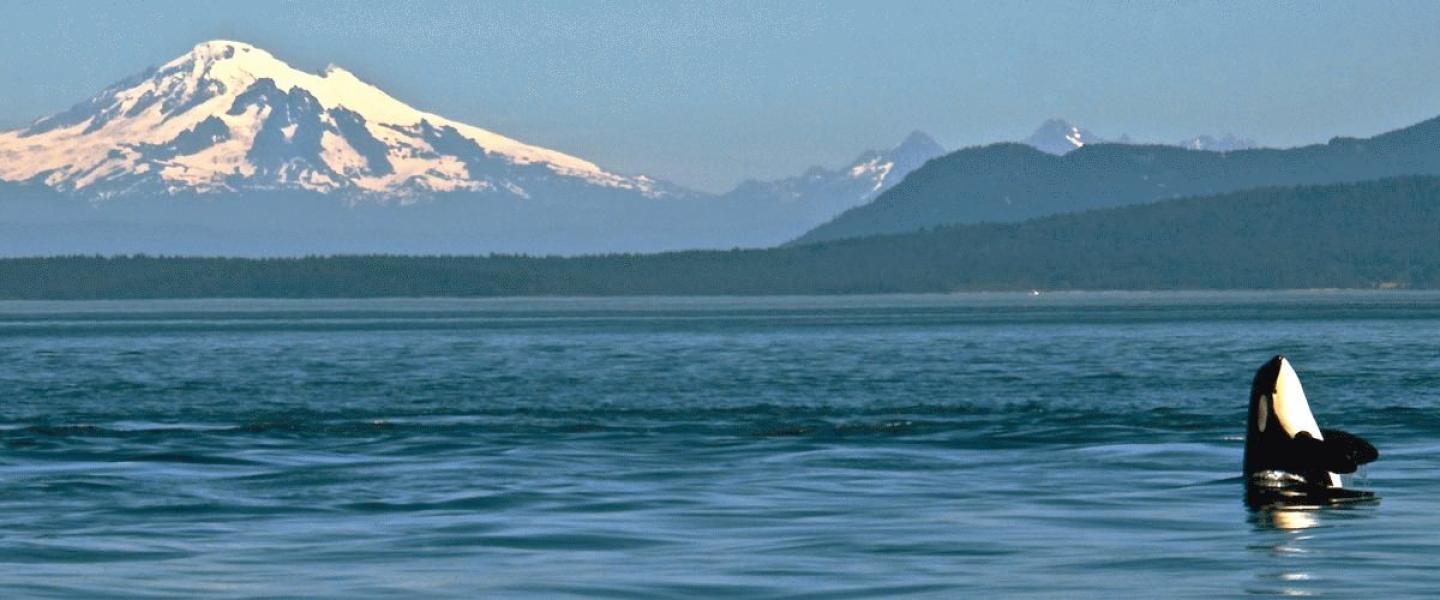
Each day we leave the harbor with hopes of seeing the amazing black and white creatures we call orcas. Of course, ideally we also want harbor seals, sea lions, eagles, porpoises, and other whales sprinkled in the mix. But alas, wildlife is wild. Hopes and wishes aside, the wildlife of the San Juans will do what it pleases, which is one of the reasons we love to experience it in this setting. Now ... based on this introduction, you probably are guessing we didn't see orcas today. However, don't jump to conclusions. Captain Craig, Naturalist Sally, a crew of enthusiastic of guests and I departed Friday Harbor having heard word that there were the mammal-hunting (a.k.a. transient) orcas west of Victoria. Unsure if we could reach them, we headed that direction with high hopes. We planned to look for Minke whales if the transients did not continue heading our way. Along the way we stopped to awe at harbor seals, the occasional harbor porpoise or two, and massive stellar sea lions. As we cruised into the Haro Strait we heard word of a Humpback within our range south of Victoria. So humpback searching we went! As we headed that way, word changed again and transient were reported southwest of Victoria. So transient orca searching we went! With the plans having changed numerous times - and continual uncertainty of what wondrous wildlife we would see- we finally spotted transient dorsal fins in the distance once we passed Victoria! We were lucky enough to see 2 young transients (one very young calf), at least 2 (but probably 3) females, and T20. T20 and the rest of his pod, T21 & T22, were involved in one of the only documented altercation between transient and resident orcas. Generally, residents and transients tend to ignore or actively avoid being around each other. They don't interbreed, don't eat the same food, and are thought to have entirely differently languages. In most cases, when residents and transients get within a few miles of one another the groups either pass as if they don't notice each other, or the transients actively avoid the residents. Researchers didn't really understand why this was, until 1993 when a researcher encountered J Pod porpoising at the three transient orcas. It appeared that the transients were clearly attempting to flee the situation. At the time J Pod had a young calf in the pod, J28 (Polaris) and this incident may have occurred because the residents were trying to keep the marine-mammal eating orcas away from their young. No one can ever be certain why this incident occurred, however, so all possible answers will be speculations. Such incidents are rare, but may be the reason the "tougher" seeming mammal eating orcas avoid any interaction with the resident community.
It was quite an amazing day. Our guests were very adaptable, going with the flow, and boy were they rewarded for their patience. Today just goes to show (to quote myself on the trip today) - when watching wildlife, you don't know what you'll see until you're pulling back into the harbor. Over and out, Ashley, Naturalist